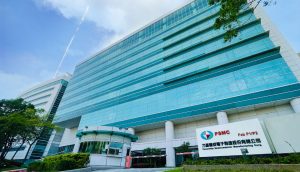Popular Keywords
- About Us
-
Research Report
Research Directory
Semiconductors
LED
Consumer Electronics
Emerging Technologies
- Selected Topics
- Membership
- Price Trends
- Press Center
- News
- Events
- Contact Us
News

Contract chip manufacturer United Microelectronics Corp has partnered with Intel to develop a 12-nanometer technology platform and will commence production at three Intel facilities in Arizona, USA. According to a report by Nikkei, mass production for chips destined for communication and other appli...
News

As various governments actively court semiconductor foundries in Taiwan, PSMC, in partnership with India's Tata Group, held a groundbreaking ceremony for India's first 12-inch fab on March 12th. As per a report from TechNews, PSMC has been collaborating with Japan and India recently to establish a s...
News

According to TechNews, Taiwan's semiconductor foundry, PSMC (Powerchip Semiconductor Manufacturing Corporation) recently announced its collaboration with Tata Electronics in India to establish the country’s first 12-inch wafer fabrication plant in Dholera, Gujarat. In an interview on the 4th, Chai...
News

The semiconductor supply chain is accelerating its globalization strategy. On February 29th, PSMC announced its collaboration with Tata Electronics in India to construct the country's first 12-inch fab in Dholera, Gujarat. The construction of the fab is expected to commence within this year. Acco...
News

Foundry is a crucial sector in the semiconductor industry and a focal point of attention for many professionals in the industry. Recently, three foundries have released their outlook for the first half of 2024, all indicating a cautious outlook for the first quarter. According to Taiwanese News o...